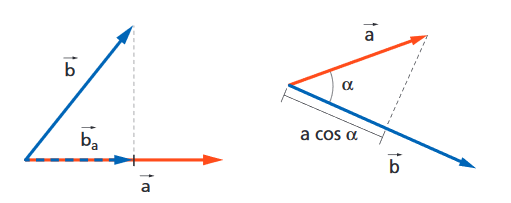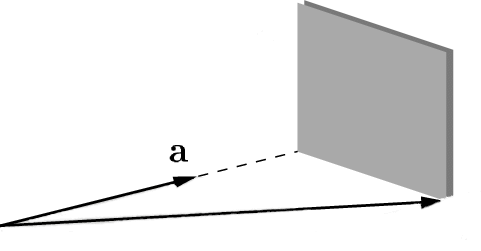The scalar product between two vectors is given by the modulus of the first by the component of the second along the first (projection), but since it is a symmetrical bilinear form, the inverse is also valid, i.e. the projection of the first on the second.![]()

The dot product combines two vectors into a scalar quantity, which immediately suggests that the richness of their spatial information is lost.
In fact, if we represent two vectors ![]() and
and ![]() , and the projection of
, and the projection of ![]() over
over ![]() , we realize that we can identify infinite vectors of different length and direction, which leave the projection unchanged.
, we realize that we can identify infinite vectors of different length and direction, which leave the projection unchanged.
Extending the reasoning in three dimensions, we realize that the locus of vectors with a given projection on ![]() is a plane perpendicular to
is a plane perpendicular to ![]() and passing through the extreme of the projection on
and passing through the extreme of the projection on ![]() .
.

From the algebric point of view, the calculation of the scalar product is simple: it is the sum of the products of the index-paired components:![]()
